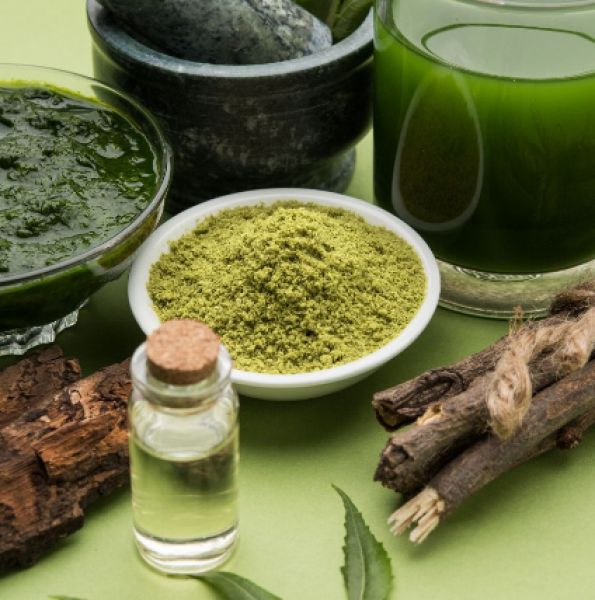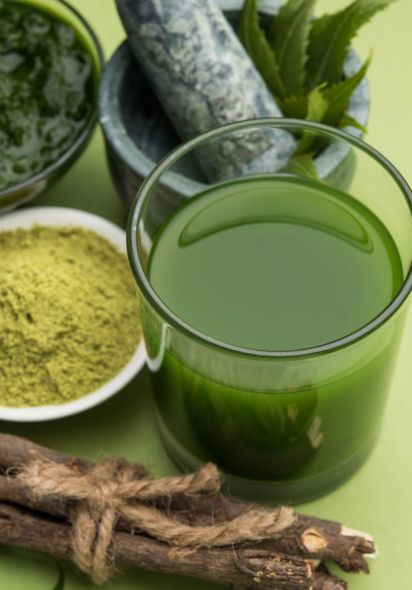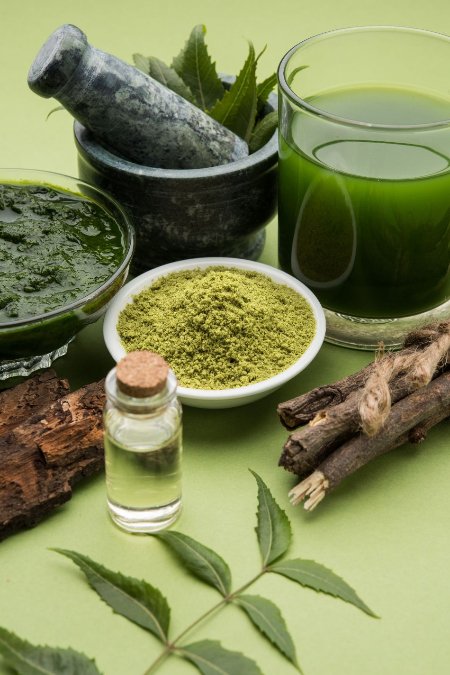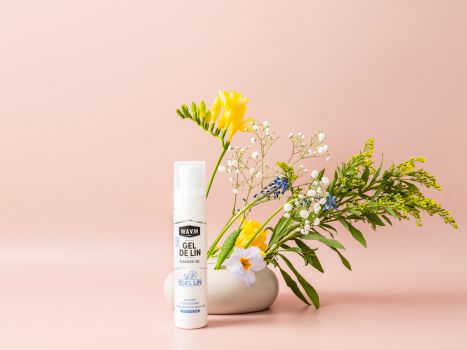Neem is a small shrub native to India and Burma. It generally grows in hot regions (tropical and arid). Neem is also found in Nepal, Sri Lanka, Bangladesh and Thailand. Because of its adaptability, the plant can be found as far afield as the deserts of the Sahel and Malaysia.
Azadirachta indica is sometimes confused with its cousin Melia azédarach, also known as neem. However, the latter can grow in climates with much lower temperatures (-10°C). When fully grown, Neem grows to between 2 and 5 metres in height. In its native India, it can even reach 25 to 30 meters in height. It flowers in May and is harvested between August and September. However, flowering and fruiting are highly dependent on zone and climate.
In Thailand, for example, neem flowers grow all year round, whereas in East Africa they grow at very different times. Neem flowers are white and give off a sweet honey-like scent.
Neem has serrated leaves measuring 3 to 8cm in length. They grow rapidly. Because of its foliage, which can be very dense, neem makes a perfect shade tree.
It is often planted along avenues in cities and near roads in certain tropical countries. Neem fruits are similar to small olives, orange-yellow to green in color. They are about 3 cm long. The fruit is also highly prized by birds, bats and sometimes even humans. Neem is an excellent repellent against flies, aphids, beetles and mosquitoes.
Neem has a strong scientific and medical presence in India. It also has a strong cultural history in India. It is said that Mahatma Gandhi used to pray under a Neem tree, and enjoyed eating its leaves in his chutneys (a traditional Indian dish). It's true that they're highly nutritious.
Cultivated for over 4,000 years, written records have been found in India mentioning this plant with 1001 virtues. In Indian culture, the tree is sacred and said to protect.
According to Indian mythology, Neem has a divine origin. Indra, the god of war and time, inadvertently spilled a few drops of the nectar of the gods: the "milk of the ocean". These drops fell to Earth and gave rise to the famous plant we know today as Neem...
The name of this plant comes from the Sanskrit "Nimbati Swastyamdadati", meaning "that gives good health". As for its Latin name, "Azadirachta indica", the word "Azadirachta" is of Persian origin and translates as "free, noble, independent tree". The second part, "indica", simply means "Indian", as the tree is mainly found in India.
Neem leaves are very rich in protein. However, due to their bitterness, only goats and camels use them as fodder. Neem flowers, on the other hand, are eaten as a condiment in Burma. The wood of the neem tree is used as fuel, either as is or in the form of charcoal. It is highly resistant to termites and other wood-eating beasts. Its bark can also be used to make ropes.
Neem's young branches and twigs are often used for brushing teeth, as they promote good oral health. Neem has many uses: soaps, toothpaste, lighting, cosmetics, pesticides, disinfectants, glue with its resin, tannin, fertilizer..


.jpg)
.jpg)









